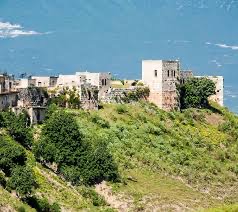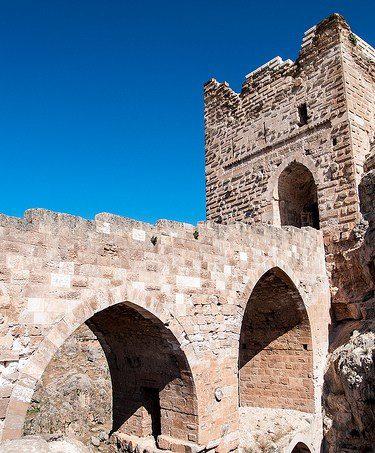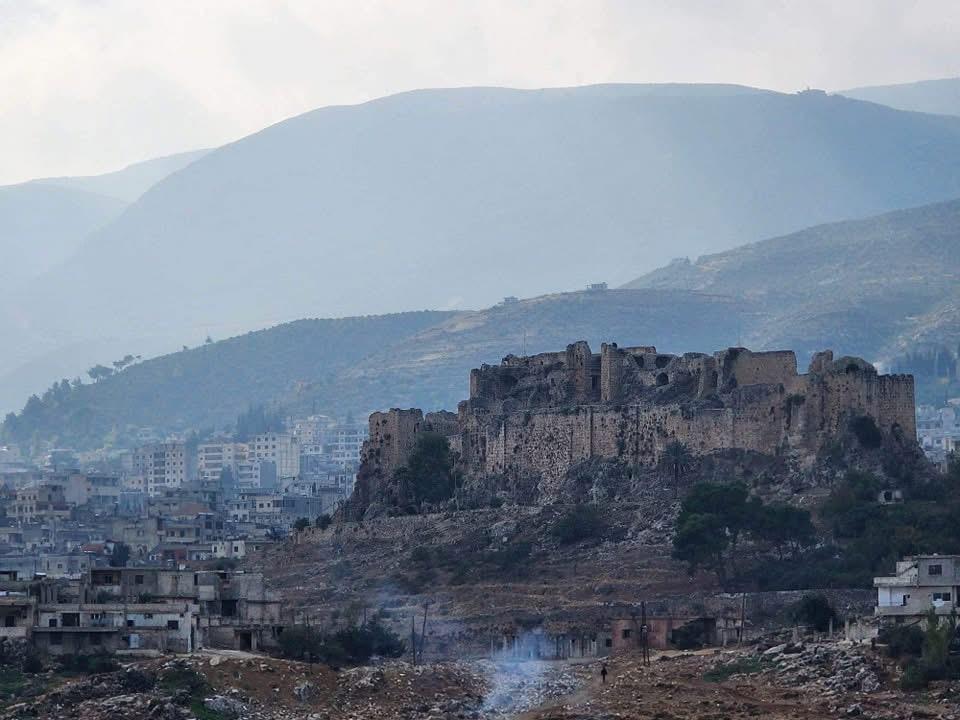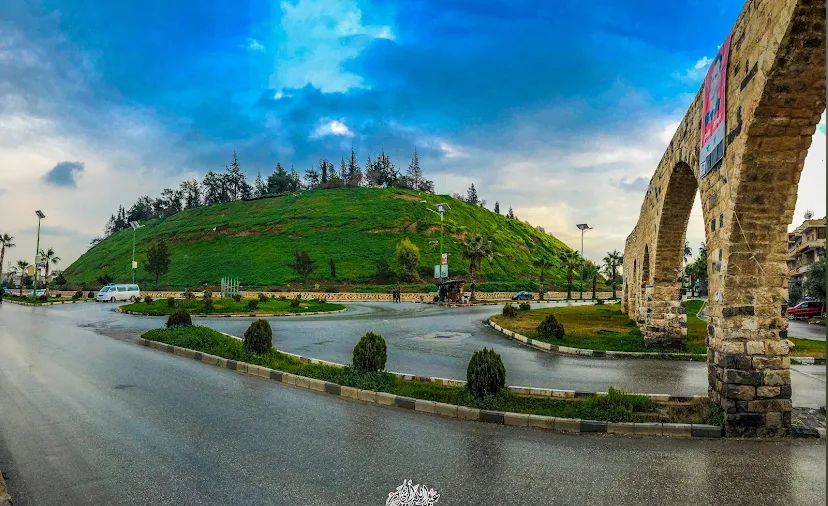Resafa Castle

Perched atop a rocky outcrop enveloped by a pine forest southwest of Masyaf, lies the Ismaili Qalaat Rusafa, a fortress constructed in the late 12th century to safeguard the passages leading to the Ghab plain. The stronghold comprises an irregular wall that follows the contours of the cliff, surmounted by semi-cylindrical towers and preceded by a rock-cut ditch. A broken entrance leads into an inner courtyard paved with limestone, featuring centrally located rock-hewn cisterns that collect rainwater and exhibit inclined drainage holes designed to minimize sedimentation.
Al-Madiq Citadel

This noria, located at the historic Orontes River bridge, is the oldest wooden waterwheel that still retains its original mechanism. It boasts a diameter of approximately 22 meters and features 120 compartments, lifting 2000 liters of water per minute to a double-arched stone aqueduct. The Orientalist Dickson documented it in an 1890 watercolor painting, which is currently exhibited at the Victoria and Albert Museum in London. Its wooden axles are replaced every seven years with mulberry wood, which is steeped in tar oil for six months.
Shaizar Castle

The arched Rastan channel stands as an exceptional example of Roman hydraulic engineering in inland Syria. It elevates water via a small stone noria to a conduit composed of ten semi-circular arches. An archival photograph from 1930 confirms the existence of a wooden noria, 8 meters in diameter, which was connected to the channel to draw water to the upper orchards of Rastan.
Masyaf Castle

Perched 20 meters above the plain on the left bank of the Orontes River in the southern Ghab region, Tel Asharneh holds the remains of the ancient city-state of Tunip. This significant city is notably mentioned in the Amarna letters (14th century BCE). Excavations conducted by a Canadian expedition from Laval University (2004-2011) revealed a sprawling settlement covering 77 hectares. Among their key discoveries was a royal palace constructed of mudbrick, coated with white plaster, and featuring cedar wood flooring. This cedar flooring represents the earliest evidence of this timber’s use in the Near East. Further archaeological findings included cuneiform tablets, which indicate Tunip’s shifting alliances—at times with the Mitanni and at others with the Hittites. This dynamic political alignment underscores the city’s strategic location at the heart of imperial conflicts during that era.
Hama Citadel

Perched on a hill overlooking the Qashtun Dam in the central Al-Ghab plain, this Ayyubid-era castle was strategically built as a watchtower on the road to Antioch. It comprises a semi-circular wall and an artificial moatreferencenc, which was connected to the Orontes River via a sloping stone channel.

